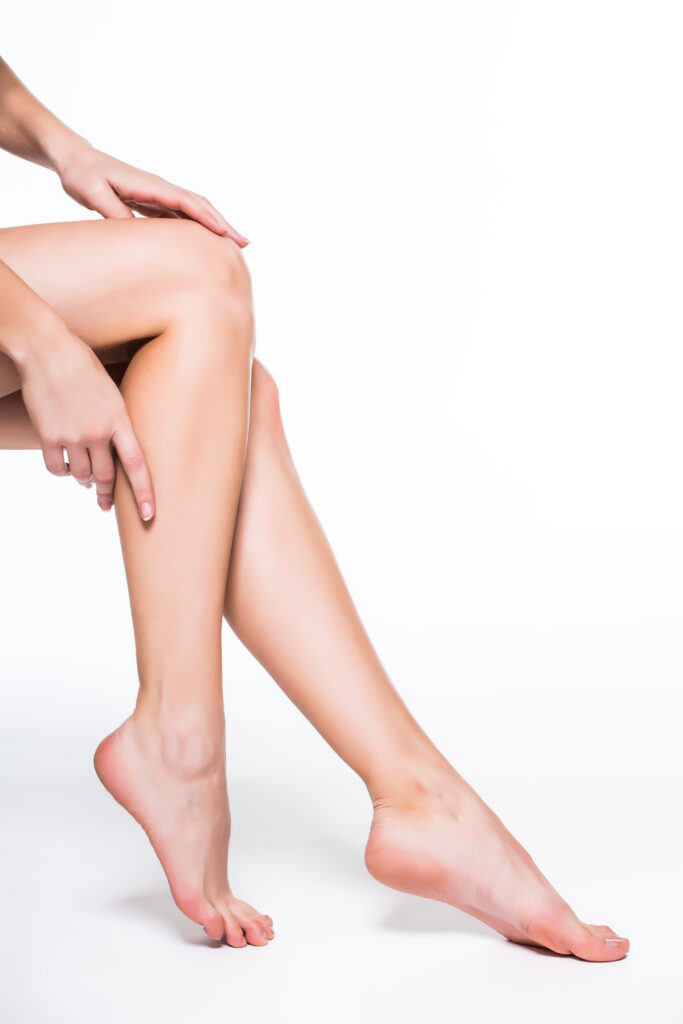

On average, women dedicate nearly two months of their lives and spend over $10,000 managing unwanted hair. For those opting for monthly or bi-monthly waxing, the lifetime expenditure can soar to over $23,000. Laser hair removal treatments are a cost-effective, permanent hair removal solution suitable for all skin types, offering substantial long-term results compared to traditional hair removal methods.
Laser hair removal is a cutting-edge procedure that uses laser technology to achieve permanent hair reduction. Modern laser treatments can effectively prevent further hair growth by targeting and disrupting the hair follicles using intense laser light. Botox Montreal offers the most effective laser hair removal treatment on the market to its patients for optimal results.

Modern laser hair removal systems are safe and effective, making them a popular treatment option among all kinds of people. However, patients with dark hair and light skin typically benefit the most from laser hair treatment.
Dark skin acts as a filter for the hair removal laser, preventing hair removal devices from acting to their full capacity. Nonetheless, patients with dark skin can still enjoy the full benefits of laser hair removal, including softer skin, after multiple treatment sessions.
Laser hair removal offers permanent hair reduction by disrupting hair follicles and preventing regrowth. When performed by experienced technicians, the treatment is quite safe and patients can expect minimal pain. The removal of hair using laser machines offers a wide range of benefits:
Patients can expect a permanent reduction in hair growth after treatment. Still, it is important to be aware that dormant hair follicles can reactivate with time. Regrowth in hair removal treatment areas can happen due to hormonal changes, pregnancy, weight gain, and aging. In these cases, subsequent treatments can be applied to achieve the same results.


During a laser hair removal session, numbing cream is not applied to the skin. The laser technician utilizes a small handpiece to deliver a potent yet gentle laser beam to targeted skin areas, effectively eliminating unwanted hair. The duration of a laser treatment session varies from a few minutes to an hour, depending on the treated area’s size and hair density. Some individuals may experience mild discomfort, likened to the sensation of a rubber band snapping against the skin, but this quickly fades, eased by the effect of a Dynamic Cooling Device.
To ensure a safe procedure, you’ll be asked to wear special goggles that shield the eyes from concentrated light. If necessary, the technician may shave the treatment site before the procedure. Achieving complete hair removal requires multiple sessions, typically spaced six to eight weeks apart. Since body hair is not consistently in the same growth stage, several treatments are necessary to target follicles during the active growth phase. On average, about six treatments are recommended for permanent hair removal, though your laser technician will collaborate with you to determine the most suitable treatment plan based on your hair type.
Laser hair removal treatments can be applied to nearly every part of the body, excluding eyebrows and eyelashes due to their proximity to the eyes. Popular treatment regions include the underarms, bikini area, and legs.
While laser hair removal can address any hair color and thickness, finer and lighter hair poses a greater challenge as it lacks sufficient pigment to attract the laser’s light effectively. Darker hair areas typically require fewer treatment sessions. While this makes certain regions, like the upper lip and thighs, potentially more challenging to treat, our skilled technicians can assist you in determining the optimal treatment plan for your preferences and target areas.

While the vast majority of patients can enjoy the full benefits of this effective treatment without restrictions, those with the following conditions should abstain from laser hair removal:
If you’re taking Accutane, it is better to wait 6 months before treatment.
Skin covered with decorative tattoos, permanent make-up, or write-off tattoos can’t be treated
Patients with a history of photosensitivity to light of 755 nm or 1064 should abstain.
Patients who exhibit a history of light-triggered seizures should avoid laser hair removal.
Medications such as blood thinners, iron supplements, and herbal supplements including ginkgo, ginseng, and garlic place patients at a higher risk-
Patients taking drugs to induce photosensitivity in or above 755 nm or 1064 nm should abstain.
If one or more active lesions are present in the intended treatment area, then patients should avoid laser hair removal. Patients should start prophylaxis before treatment, as prescribed by a medical doctor.
Candidates should be evaluated by a licensed health professional for medical clearance.
Open wounds and skin that is actively infected should not undergo laser hair removal.
Patients with Raynaud’s phenomenon require an extra level of care.
Testing should be performed before treatment.
Patients with cardiac pacemakers, cardioverters, and similar implantable devices will require a doctor’s approval before treatment.
Using laser hair removal technology on recently tanned skin can result in blisters, hyperpigmentation, or hyperpigmentation. It is better to wait for the tan to fade before commencing treatment.
Laser hair removal carries potential side effects that should be taken into consideration. These include the risk of burns, blisters, scabs, hypopigmentation, hyperpigmentation, purpura, or activation of herpes simplex. In rare instances, scarring may occur. Hypopigmentation or hyperpigmentation may manifest after 1 to 2 weeks, and in rare cases, these effects could last for months or more. If hypopigmentation or hyperpigmentation occurs, regardless of skin color, treatment should be discontinued. To minimize the likelihood of these pigmentary changes, patients are advised to avoid sun exposure both before and after the laser hair removal procedure.
Laser hair removal is a cutting-edge treatment that utilizes advanced laser technology to achieve permanent hair reduction by targeting and disrupting hair follicles, preventing further hair growth. This procedure is conducted without using numbing cream on the skin. The laser technician employs a small handpiece, delivering an intense yet gentle laser beam to targeted areas of the skin, effectively removing unwanted hair.
Laser hair removal is suitable for people seeking a permanent solution to unwanted hair. Candidates can treat nearly any area of the body, with exceptions like eyebrows and eyelashes due to their proximity to the eyes. The procedure is versatile, catering to various skin types and hair colors, though individuals with dark hair tend to require fewer treatment sessions.
Laser hair removal is applicable to any area of the body except for eyebrows and eyelashes. Popular treatment areas include the underarms, bikini area, and legs. The procedure effectively targets and treats unwanted hair on different body parts, providing a lasting solution.
The recovery time for laser hair removal is minimal. Patients may experience temporary side effects such as redness, but these typically fade quickly. The procedure is designed to have little to no downtime, allowing individuals to resume their regular activities immediately after treatment.
Laser hair removal offers long-lasting results. While individual experiences vary, most clients achieve significant hair reduction after about six treatments. The procedure disrupts hair growth cycles, providing stable reduction over several months. Maintenance treatments may be recommended to optimize and prolong the results.
Laser hair removal may cause mild discomfort during the session, often compared to the snapping of a rubber band against the skin. However, this discomfort is temporary and quickly dissipates. The use of a Dynamic Cooling Device helps minimize any discomfort by providing a cooling sensation during the procedure.
Laser hair removal primarily targets hair follicles and does not permanently affect the skin. While there are potential side effects such as burns, blisters, and scabs, these are typically rare, and experienced technicians take measures to ensure the safety of the procedure.
During a laser hair removal procedure, patients can expect the use of special goggles to protect their eyes from the concentrated light. The session duration varies based on the treated area and hair density, ranging from a few minutes to an hour. Multiple sessions, usually spaced six to eight weeks apart, are necessary for optimal results. It is crucial to follow pre and post-treatment instructions, including avoiding sun exposure, to minimize the risk of side effects. The laser technician may shave the treatment site if necessary, and a customized treatment plan will be discussed based on the individual’s hair type and preferences.
Eumelanin and pheomelanin are crucial pigments influencing hair color during laser hair removal. Eumelanin, responsible for brown and black hues, absorbs laser energy effectively, making the treatment more efficient for individuals with darker hair. In contrast, pheomelanin, associated with red and blonde colors, poses a challenge as it absorbs less laser energy, requiring careful consideration and potentially more sessions for optimal results.
Laser hair removal primarily targets hair follicles during the anagen phase, the active growth stage. The melanin in the hair follicle absorbs the laser beam, converting light energy into heat. This heat damages the follicle, inhibiting future hair growth. Since anagen hair has more pigment, the laser is most effective during this phase, providing long-lasting results.
Individuals with a history of cold sores should consider antiviral medications before IPL hair removal in areas prone to outbreaks. The heat generated during the procedure may trigger a cold sore recurrence. Taking antiviral medications helps prevent this reaction, ensuring a safer and more comfortable experience.
Galvanic electrolysis and laser technologies differ significantly in their approaches to permanent hair removal. Galvanic electrolysis uses a direct current to destroy hair follicles, while laser technologies target melanin in the follicles with intense light. Laser treatments are generally faster, especially for larger areas, offering a more efficient solution for permanent hair reduction.
Individuals with a history of herpes simplex should take precautions before laser hair removal in the Brazilian wax or pubic area. Applying antiviral medications before the procedure helps prevent herpes simplex activation. Additionally, practitioners may recommend scheduling treatments during periods of lower viral activity to minimize the risk of outbreaks.
Indoor tanning, including tanning bed use, can significantly impact the outcomes of laser hair removal procedures. Tanned skin absorbs more laser energy, increasing the risk of burns, hyperpigmentation, or other side effects. It’s essential to avoid tanning before laser sessions and inform practitioners of any recent sun exposure to ensure a safer and more effective procedure.
Laser hair removal for individuals with alopecia areata requires a tailored approach. Since alopecia areata results in patchy hair loss, practitioners may need to adjust treatment strategies, focusing on specific areas. Additionally, individuals with dermatitis-prone skin should communicate their condition to the practitioner, who can provide suitable pre and post-treatment care to minimize potential irritation and ensure a successful laser hair removal experience.